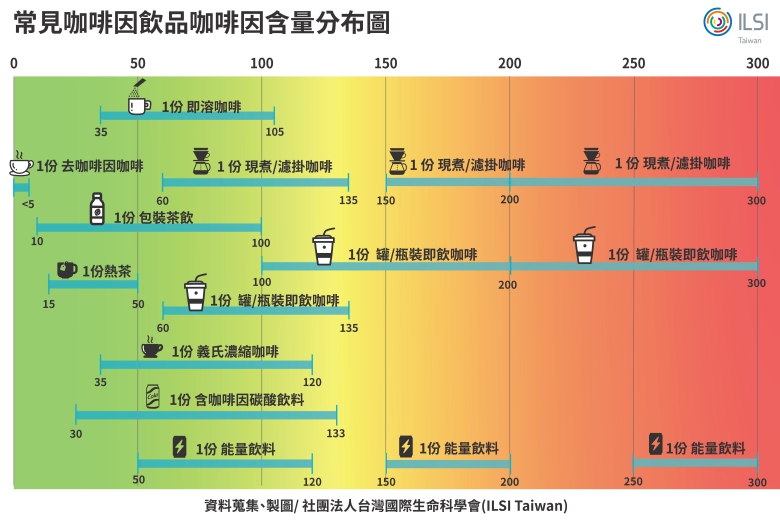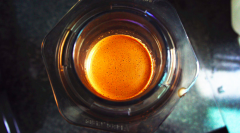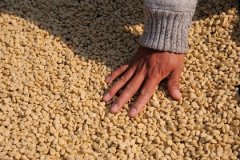The amount of non-standardized caffeine prepared by commercial drinks varies greatly from serving to serving.

For professional baristas, please follow the coffee workshop (Wechat official account cafe_style)
According to the caffeine content distribution map of common caffeinated drinks on the market, 400 mg of caffeine is roughly comparable to about 4 cups of freshly brewed coffee, or 10 cans of carbonated drinks, or 2 cans of energy drinks.
In terms of details, it should be noted when estimating daily caffeine intake that beverages that use natural ingredients as a source of caffeine, such as coffee, although the names of products sold in the market are the same, the caffeine content of each serving varies greatly due to the variety of raw materials, origin, processing methods or the size of the portion. Take the freshly brewed coffee sold in the market as an example, because the size of the portion has not yet been standardized, there are differences in different coffee products, the sources of the beans used and the differences in the preparation process, and so on. As a result, the caffeine content of each cup of freshly brewed coffee may range from less than 100 mg to more than 300 mg.
In August 2006, the Consumer Protection Commission of the Executive Yuan promoted the labeling of caffeine content per cup of freshly brewed coffee to large chain coffee shops in the form of administrative guidance, marked with "red" to represent caffeine content of more than 201 mg and "yellow" as caffeine content of 101 mg to 200 mg. The "green" label, with a caffeine content of less than 100 mg, provides a simple way for consumers to judge. This sign can be found in obvious places of the store or on the store's website. At that time, it was not required to be marked on the outer packaging of individual products.
In 2007, the Department of Health (now the Ministry of Health and Welfare) announced that beverages containing caffeine in containers or packages should be marked with caffeine content in the outer packaging of individual products, and that caffeine content should not be included in the nutrition label. so as not to make consumers mistakenly think that coffee is nutritious. The caffeine content of liquid drinks is marked by the number of milligrams of caffeine per 100ml. If the caffeine content is less than 20mg, it can be labeled "less than 20 mg/100mL". If it is equal to or less than 20mg, it can be labeled "low caffeine" instead of "less than 20 mg/100mL". Powder products such as "instant coffee in small packages", which need to be brewed, are marked with milligrams of caffeine per serving. In order to make it more effective and easy to identify, the EU stipulates that if the caffeine content exceeds 15 mg per 100 ml of drink, a warning must be added: "High caffeine content is not recommended for children, pregnant or breast-feeding women." there are similar regulations for other non-beverage foods.
It is worth reminding consumers that in addition to caffeinated drinks, some foods also contain a considerable amount of caffeine, such as biscuits, cakes or ice cream made from chocolate. Dietary supplements and medicines may also contain caffeine, but the content is generally not high. If you are a chocolate lover, you should also pay attention to the relevant data while tasting it. For example, a piece of 80g chocolate cake can contain 36 mg caffeine, and a piece of 28g chocolate candy can reach 19mg. But a cup of 240ml chocolate drink is less than 10mg.
Important Notice :
前街咖啡 FrontStreet Coffee has moved to new addredd:
FrontStreet Coffee Address: 315,Donghua East Road,GuangZhou
Tel:020 38364473
- Prev

ILSI confirms caffeine security code ≠ caffeine intake limit or iron law
For professional baristas, please follow the Coffee Workshop (official account of Wechat cafe_style) ILSI North America Branch, a rigorous systematic review of caffeine published in the Journal of Food and Chemical Toxicology (Food and Chemical Toxicolog) in April 2017. it reconfirms the benchmark conclusion established by Nawrot et al in 2003.
- Next

Interpretation of food labels worry-free caffeine intake on your own
Communication of professional baristas Please follow the coffee workshop (official Wechat account cafe_style) who want to enjoy the aroma of coffee in life, but do not want to be bothered by caffeine intake, the easiest way to prevent is to grasp the safety password of 4003002.5 BW, and learn to read food labels, make sure that the amount of caffeine intake is controlled within the right amount. Except for 400-300-2.5 BW
Related
- What is the standard process for the purpose of coffee cup testing? What is the difference between hand-brewed coffee and cup testing?
- How to use hand-brewed coffee paragon small golden balls? How does cold coffee lock in the aroma of coffee?
- Is American coffee black? What is the difference between American coffee and drip coffee?
- Unexpected! Well-known tea beverage brand Lele Tea will withdraw from the Zhengzhou market!
- Starbucks enters the fashion and beauty industry?! Netizen: Give me an ice American eye cream
- Why can American refills for free? The difference between Americano and American drip pot coffee
- Being chased out of the rain in front of Starbucks?! Store: Sheltering from rain under umbrellas poses a safety hazard
- The white moonlight has changed?! Lucky launches "Big Winter Pear American"
- Hand-brewed coffee three-stage method, high-sweet and universal brewing method to share! What does the high sweet water level of hand-brewed coffee mean?
- What is the difference between raw, refined and full espresso coffee? How to extract espresso and taste good?

